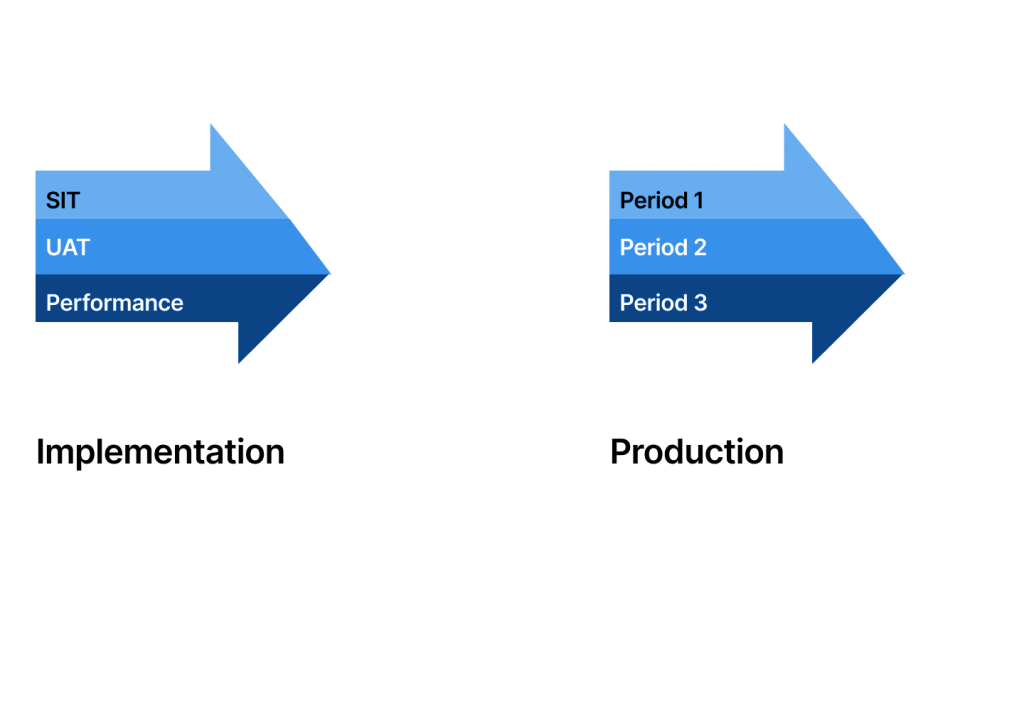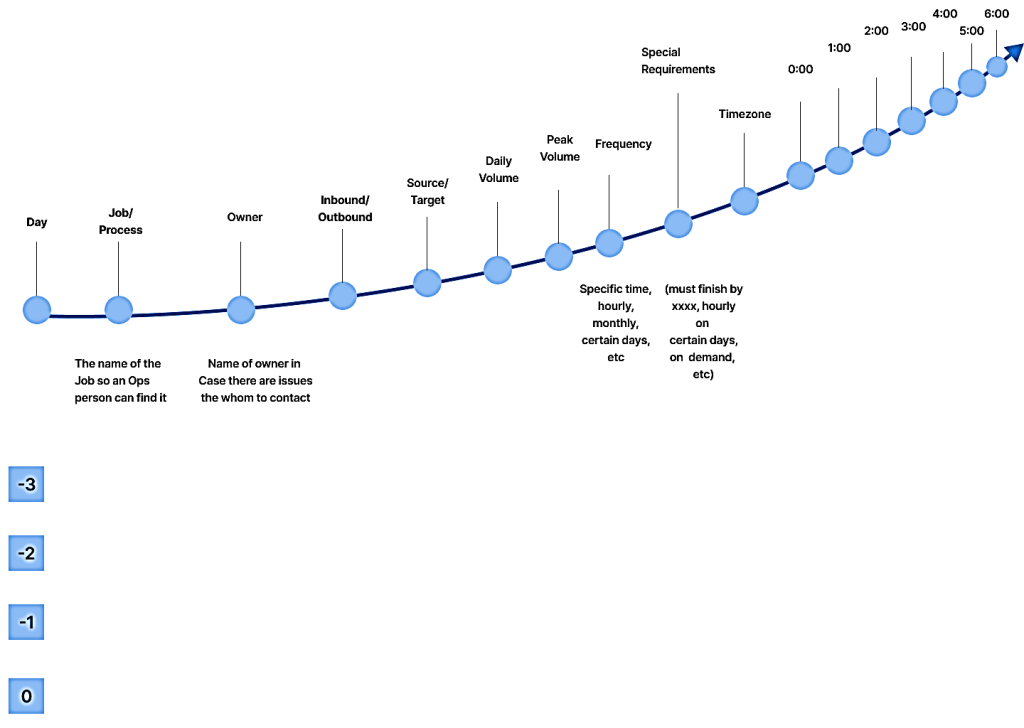A runbook is like a detailed manual that lists all the tasks done in a Cloud ERP system. It includes routine procedures that business users do every day, some of which are automatically scheduled. Runbooks can be electronic or physical and contain instructions for starting, stopping, monitoring, and fixing processes. They also cover how to handle special requests and unexpected situations. A good runbook helps skilled users manage and troubleshoot a system effectively. In Oracle Cloud, a well-designed runbook is crucial for smooth daily operations and successful period closures. It outlines what tasks need to be done, how they start and end, and under what conditions they run. Every organization might have its own version of a runbook, depending on the systems they use and the tasks they need to perform. But the main purpose is always to keep everything running smoothly and efficiently.
The Importance of Runbooks
During your transition to a new platform, it’s crucial to establish, test, and put into action the runbook. This document serves as a guide for your entire system, outlining standard processes, integrations, and reports. A well-organized runbook offers several key benefits:
- Tracking Dependencies: It documents all process dependencies, helping administrators identify missing prerequisites systematically. It’s essential to consider the broader IT landscape, including data feeds from upstream systems and outputs to downstream platforms.
- Ensuring Consistency: Using the runbook for routine operations promotes consistent practices, reducing errors and saving time.
- Optimizing System Performance: The runbook’s design considers task sequencing and duration, ensuring efficient task execution and avoiding conflicts with end-user activities.
- Mitigating Employee Turnover Impact: A well-documented runbook reduces reliance on specific employees or integrators, minimizing disruptions caused by employee turnover.
- Facilitating Period Closures: The runbook plays a crucial role in ensuring accurate financial reporting during period closures, which is vital for stakeholders like executives and regulatory authorities.
To create an effective runbook, consider these key factors
- Goal-Oriented Approach: Define specific goals, such as closing subledger periods within a day, and structure your runbook accordingly.
- Detailed Content: Provide detailed information for each process, including start and end times, estimated volumes, and sequencing of tasks.
- Day-in-the-Life Testing: Test your runbook’s processes before going live to ensure they work as intended in real-world scenarios.
- Period Close Calendar: Establish a detailed calendar for period closes and update it with each cycle to ensure accuracy.
- Proactive Processing: Identify processes that can be run in advance to minimize exceptions during period closes.
- Resource Optimization: Schedule resource-intensive processes during non-peak hours to avoid performance issues.
- Clear Ownership: Clearly assign ownership of the entire runbook and individual processes to ensure accountability and swift problem resolution.
- Adaptability: Regularly update the runbook to accommodate changes, especially considering Oracle Cloud’s frequent updates.
- Automation Tools: Consider using external automated orchestration tools to streamline scheduled tasks, especially in large organizations with complex ecosystems.
Strategies for Minimizing Processing Time at Period End
Here are some considerations for reducing processing times at period end:
- Review Feed Timing: Explore spreading feeds from upstream systems across the period rather than waiting until the last minute. For instance, consider interfacing billing or credit card expense applications in near real-time or on a daily basis instead of monthly.
- Revisit Reconciliation Tasks: Evaluate whether reconciliation tasks can be distributed throughout the period. For instance, consider conducting daily posting and reconciliation of subledger transactions to ease the workload at period end.
- Designate a Permanent Role: Establish a dedicated role responsible for reviewing daily and period close runbooks. This role should stay updated on Cloud ERP innovations and changes in upstream and downstream application capabilities. Changes can be implemented gradually, as the Cloud ERP landscape evolves.
- Assess Business Value: Examine the business value of complex period end processing tasks. Instead of blindly transferring existing processes to the Cloud, assess whether detailed allocations or reporting are necessary for users.
Guidelines for Developing a Runbook
Develop your runbook as soon as possible in your project timeline. It’s a crucial aspect of your project and will become one of your most vital documents. Testing it at various stages of your project’s lifecycle is critical for ensuring success.

Elements of a Runbook
Your runbook should encompass various types of work, detailing tasks for your daily, weekly, and period processing. It should cover the following areas:
- Job Schedule (ESS jobs/job sets): Establish a logical schedule outlining tasks and procedures for running your system(s). Customize the provided template to align with your system configurations, including standard Oracle jobs and procedures.
- Integration Schedule: Develop a structured schedule detailing data ingestion from upstream systems and extraction to downstream systems, ensuring seamless communication with Oracle Cloud ERP.
- Report Schedule: Craft a systematic schedule for running both standard and custom reports within Oracle Cloud ERP, ensuring timely and accurate reporting.
- Calendar Template: Create a calendar template summarizing essential tasks and procedures to be performed on a daily, weekly, or periodic basis, facilitating efficient planning and execution.
- Validation Owners: Assign specific individuals or teams to oversee and manage distinct processes within the runbook, ensuring accountability and timely resolution of any issues.
- Last Update Date: Document the date of any changes made to the runbook, such as adding or removing jobs, adjusting frequencies, or updating special requirements. This ensures transparency and facilitates tracking of updates over time.


For each row in your runbook, ensure the following attributes are included
- Day: The specific day within the period when the job or process is executed.
- Job/Process: The name of the job or process being executed.
- Owner: The business owner responsible for overseeing this job.
- Inbound/Outbound: Specify whether data is incoming or outgoing.
- Source/Target: Identify the source or target application for the job (in/out of Cloud ERP).
- Daily Volume: Estimate of the data volume coming in or going out each day.
- Peak Volume: Estimate of the data volume during peak times (e.g., end of month, quarter, holidays).
- Frequency: How often the process is run (e.g., every 30 minutes, specific days of the week).
- Special Requirements: Any additional details or specifications relevant to the job.
- Time Slots: Indicate when the job is expected to run, using applicable columns or shading in the schedule.
If your project is implemented in phases, ensure that the runbook is updated for each subsequent go-live to reflect any changes or additions. This ensures the runbook remains accurate and relevant throughout the project lifecycle.
Runbook Best Practices?
Here are several best practices to consider when developing your runbook:
- Start Early: Begin developing your runbook well in advance of the System Integration Testing (SIT) phase. Utilize it throughout each testing cycle to ensure appropriate timings and identify potential conflicts.
- Assign a Lead: Designate a dedicated resource to collaborate with each functional and technical team involved in the project. Ensure comprehensive documentation of all jobs and processes.
- Detailed Documentation: Provide ample detail in your runbook, including every job that is run. Comprehensive documentation is crucial for clarity and thoroughness.
- Test Your Runbook: Conduct thorough testing of your runbook to identify any issues or areas that can be streamlined further. Testing helps ensure the effectiveness and reliability of your procedures.
- Identify Early Executions: Identify tasks that can be executed ahead of schedule to minimize impact on critical days or times. Spreading out tasks improves overall performance and efficiency.
Conclusion
Developing a comprehensive runbook is essential for ensuring the smooth and efficient operation of your organization’s new application footprint. While the process of creating a runbook may seem laborious, the benefits it offers to your organization’s success are significant. A well-constructed runbook serves as a valuable operational tool, providing guidance for day-to-day processing within your Cloud ERP system. It outlines standard procedures, identifies dependencies, and helps streamline tasks, ultimately contributing to improved efficiency and effectiveness. By adhering to best practices, such as starting early, assigning dedicated leads, providing detailed documentation, testing thoroughly, and identifying opportunities for early task execution, you can create a robust runbook that serves as a cornerstone for your organization’s operational excellence. Embrace the development and maintenance of your runbook as a critical aspect of your project’s success. With careful planning, diligent execution, and regular updates, your runbook will continue to support your organization’s ongoing success and growth in the ever-evolving landscape of Cloud ERP systems.
At VE3 we leverage our expertise to streamline collaboration, documentation, and automation, ensuring consistency and efficiency. With our expertise you can achieve operational excellence and adaptability in the dynamic landscape of Cloud ERP systems. To know more, explore our innovative digital solutions or contact us directly.


















